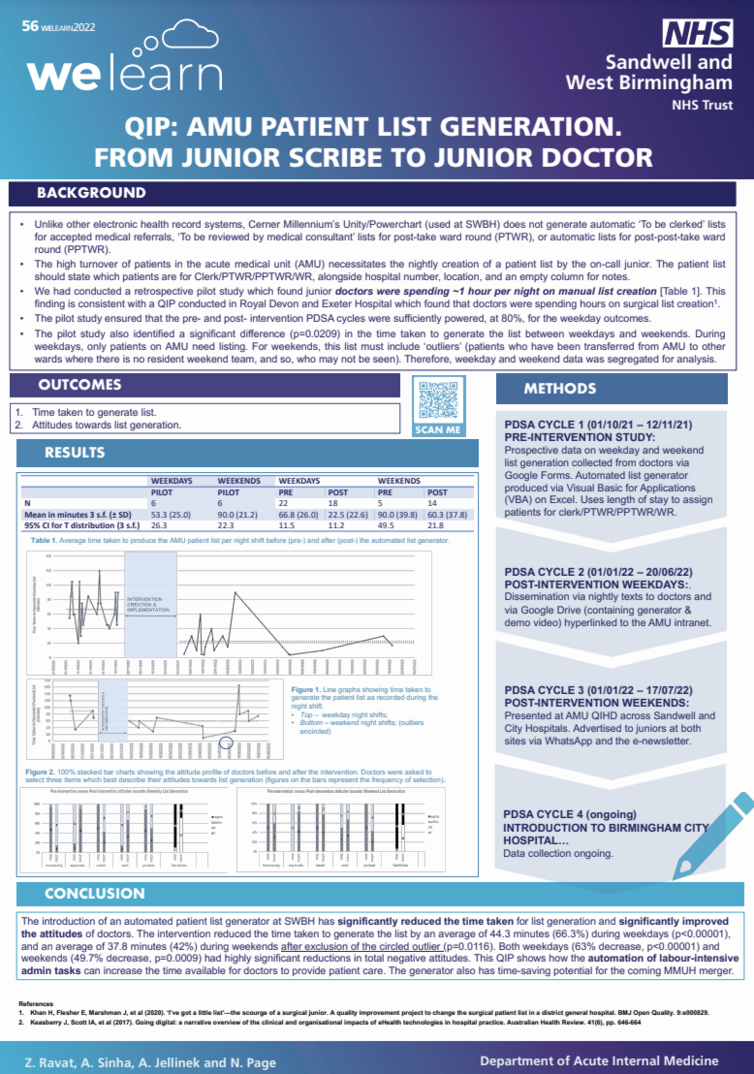Unlike other electronic health record systems, Cerner Millennium’s Unity/Powerchart (used at SWBH) does not generate automatic ‘To be clerked’ lists for accepted medical referrals, ‘To be reviewed by medical consultant’ lists for post-take ward round (PTWR), or automatic lists for post-post-take ward round (PPTWR).
• The high turnover of patients in the acute medical unit (AMU) necessitates the nightly creation of a patient list by the on-call junior. The patient list should state which patients are for Clerk/PTWR/PPTWR/WR, alongside hospital number, location, and an empty column for notes.
• The team conducted a retrospective pilot study which found junior doctors were spending ~1 hour per night on manual list creation. This finding is consistent with a QIP conducted in Royal Devon and Exeter Hospital which found that doctors were spending hours on surgical list creation.
• The pilot study ensured that the pre- and post- intervention PDSA cycles were sufficiently powered, at 80%, for the weekday outcomes.
• The pilot study also identified a significant difference (p=0.0209) in the time taken to generate the list between weekdays and weekends. During weekdays, only patients on AMU need listing. For weekends, this list must include ‘outliers’ (patients who have been transferred from AMU to other wards where there is no resident weekend team, and so, who may not be seen). Therefore, weekday and weekend data was segregated for analysis.

The introduction of an automated patient list generator at SWBH has significantly reduced the time taken for list generation and significantly improved the attitudes of doctors.
This QIP shows how the automation of labour-intensive admin tasks can increase the time available for doctors to provide patient care. The generator also has time-saving potential for the coming Midlands Metropolitan University Hospital merger in 2024.
You can read and download the QIP poster HERE

